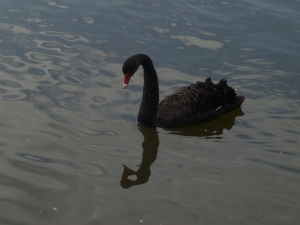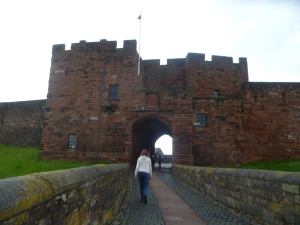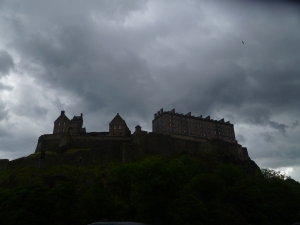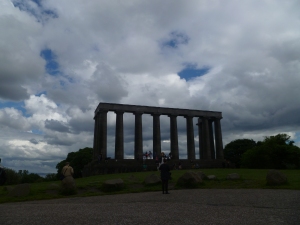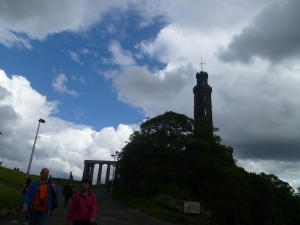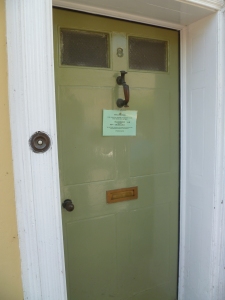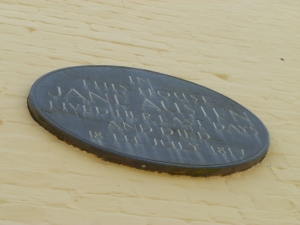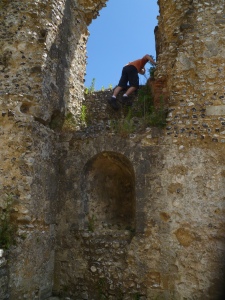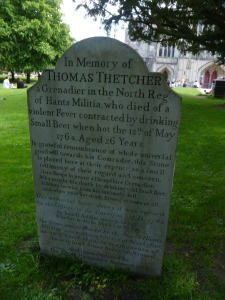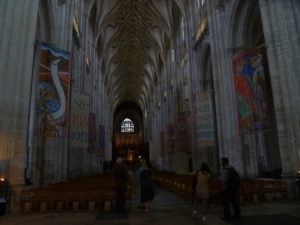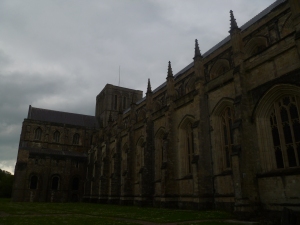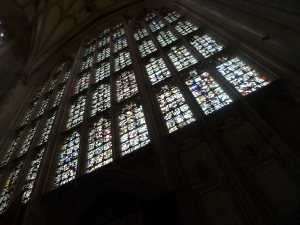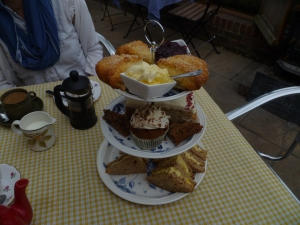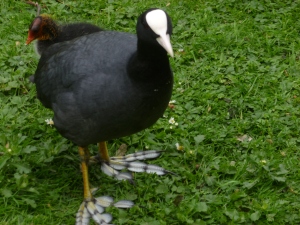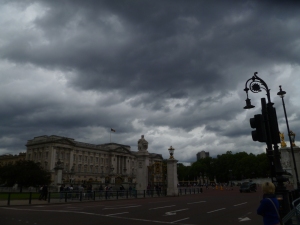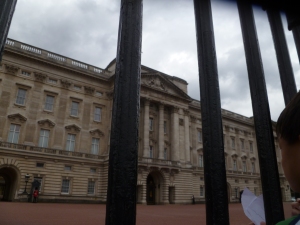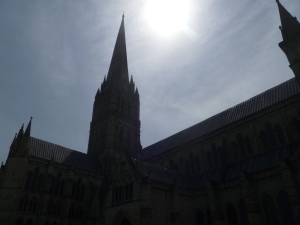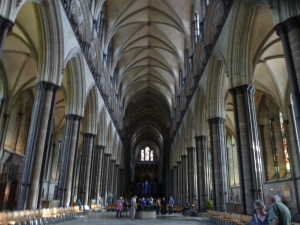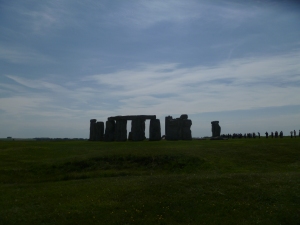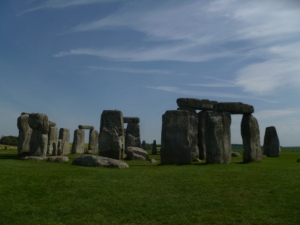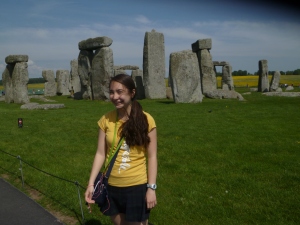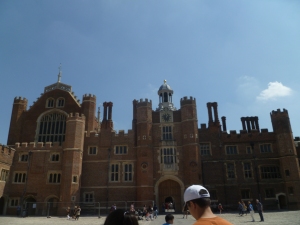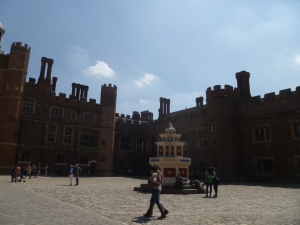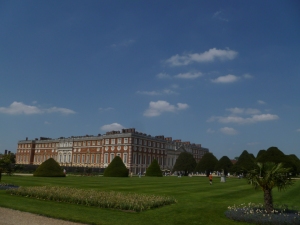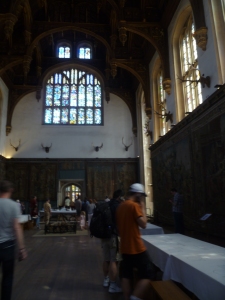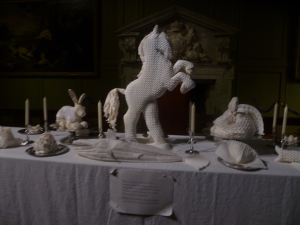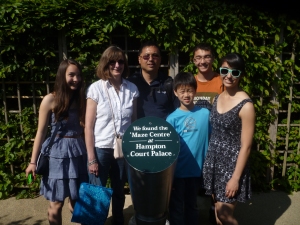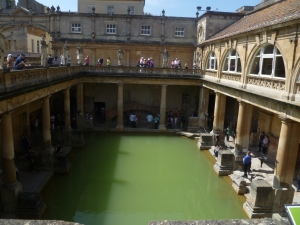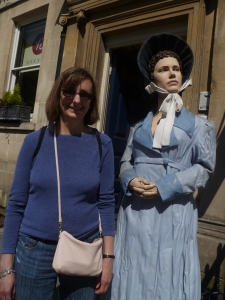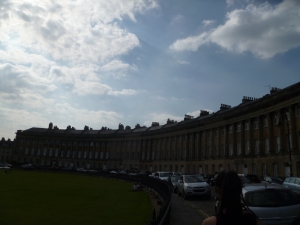Monday, May 28
Monday was a bank holiday, so we grabbed our chance and went to London one last time (at least, we assume it’s the last, since we’re leaving in less than a month).
In the parking garage at Richmond Station we saw a fox. We’ve seen one before, crossing the road, but this was in the parking garage and it looked bedraggled and very lost. We sat in the car and watched it for a few minutes until it found its way out. Then it ran into the trees and was gone.
After this short interesting happenstance we left the garage and rode the tube to Tower Hill Station. It was wet; not pouring, but very cloudy and threatening, and there was not a huge crowd of people like there usually is—nobody was going to work because of the bank holiday (it was also Memorial Day, but I guess that’s unconnected because it doesn’t seem to be a thing here) and I think the tourists were, for a large part, discouraged by the rain. So for three or four stations we had a whole car in the train to ourselves. Lindsey and I put in her earbuds and sang, just for the novelty of not being heard, and we took a lot of pictures of the empty car because it’s never happened to us before. It didn’t last more than fifteen minutes, though; before long a bunch of other people got on, and then we had to get off and go to the Tower of London.
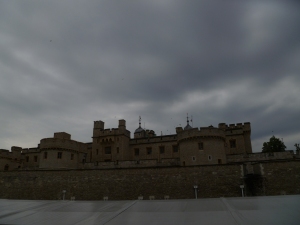
The Tower of London
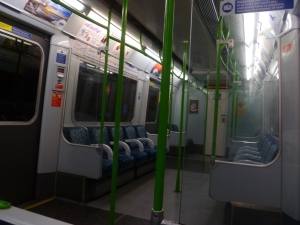
The empty underground car
The Tower is a castle actually consisting of a lot of towers, with a morbid, bloody history, including countless imprisonments and beheadings and tortures. We went on a short tour with a beefeater, or warden, who had a great sense of humor. The crowd was large and difficult to move in, so it was hard to hear what he said at the first two stops (not that it was all information I wanted to know, anyway, since it was all so unbelievably gory), but after that we pushed our way to the front. We heard about the ravens—which are kept at the castle, because of some prophesy several hundred years ago claiming that the day the ravens leave the Tower is the day England falls into destruction, or something of that ilk—and saw a few of them; and went into the chapel and heard about the massive amount of bodies, many of which belonged to criminals, buried there (they’ve now been excavated, identified, and put in coffins, because there were no grave markers when they were buried).
After the tour was over we went into the main building, the White Tower. It wasn’t really thrilling. It was an exhibition of armor and other random stuff. I think it said it was the oldest tourist exhibition in the world, which was interesting; and we saw Henry VIII’s armor, which was really as obese as all his pictures make him out to be; and we learned about the British coin system, which has always confused me. It sort of made sense though. The reason there used to be 270 (or whatever ridiculous number it was) pennies in a pound was because 270 silver pennies equaled the weight of one gold pound. Those 270 pennies are gone now, replaced with a more reasonable one-hundred-pennies-in-a-pound system, but it was interesting. We also learned why the current twenty pence pieces have only the back halves of lions as decoration: if you put the five coins less than a pound together, you get the Royal Shield, which is on the one pound coin.

The White Tower

The British coins arranged on the Royal Shield
Next we had lunch on a bench in the courtyard (it had stopped raining, though the sun had still not deigned to show its presence). A raven came over and sat on a box next to us, and it put on a show making abnormal noises and attracting tourists to our corner. The ravens are huge, bigger than crows, and they’re black and evil-looking. But it was fun to see it so close up since it belonged to the Tower of London.
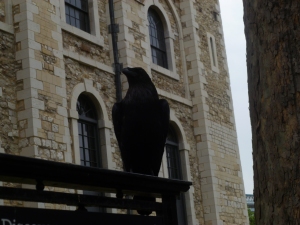
A Raven in the Tower of London
Once we’d finished eating we headed to the line to see the Crown Jewels. It was really long, but it moved fast, and we were glad we got in when we did because no matter how fast it moved it never got shorter—on the contrary, when we’d gone through the exhibit, having seen the unrealistically huge jewels set in the elaborate crowns and solid gold scepters and swords which it contained, it was way longer than it had been before. The exhibit was incredible, since they were the kind of diamonds that are supposed to exist only in fairy tales, but we couldn’t stay in it long.
Then we went on a tower walk and learned about the different kinds of animals kept at the castle, and stopped at a little fairground set up in the walls. There were booths about various things—armor, games, food, bookbinding, embroidery—and it was way better than the Renaissance fair at home. We pulled ourselves away at 2:45 and walked up on Tower Bridge, because Johnny’s been dying to and the rest of us were curious, and then came down to have tea at the Westminster Abbey Cellarium. Mom and Dad let Lindsey, Christian and me have afternoon tea: a level up from cream tea. It involves a tower for each person, with two scones at the bottom, lettuce and fancy little sandwiches in the middle, and tiny pastries at the top. It was really good. The top of the tea scale is high tea, which is all-you-can-eat of all of those, but you have to go to a hotel to get that and it’s ridiculously expensive (fifty pounds is a good price, for a very good tea, but some of the really famous hotels charge a hundred pounds. Which is about a hundred and seventy dollars. Per person).
Finally we went to the Evensong service in Westminster. It’s a beautiful cathedral, though by now we are undoubtedly in the throes of JACCCS, or Just Another Cathedral/Chapel/Church Syndrome, so we didn’t appreciate it as much as we did St. Paul’s. Or Winchester. Or King’s College at Cambridge. Or Salisbury. Or Sacrecoeur. Or the countless others we’ve seen. We did pass Isaac Newton’s grave, however, on the way out, and that was really something.

Westminster Abbey
We thought it was fitting that our (most likely) last act in London was worshipping God in Westminster. And somehow the rain, coming down hard again, fit too. It was kind of weird to drive out of Richmond for the last time.
